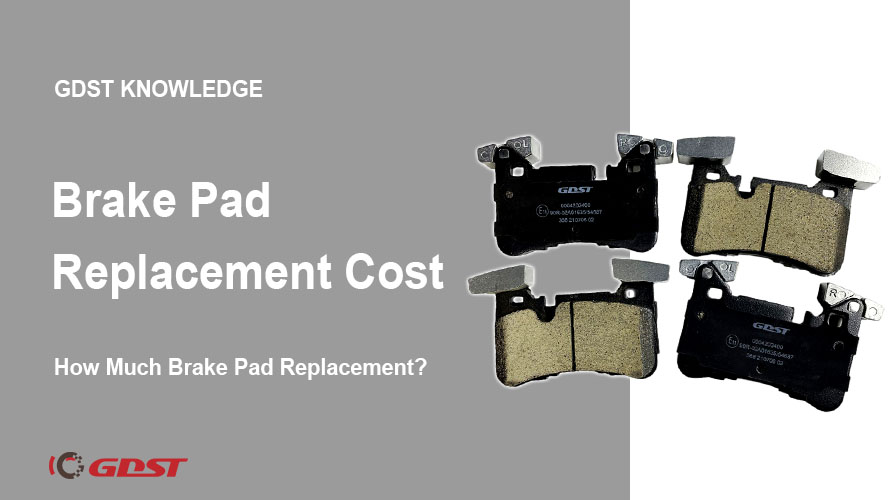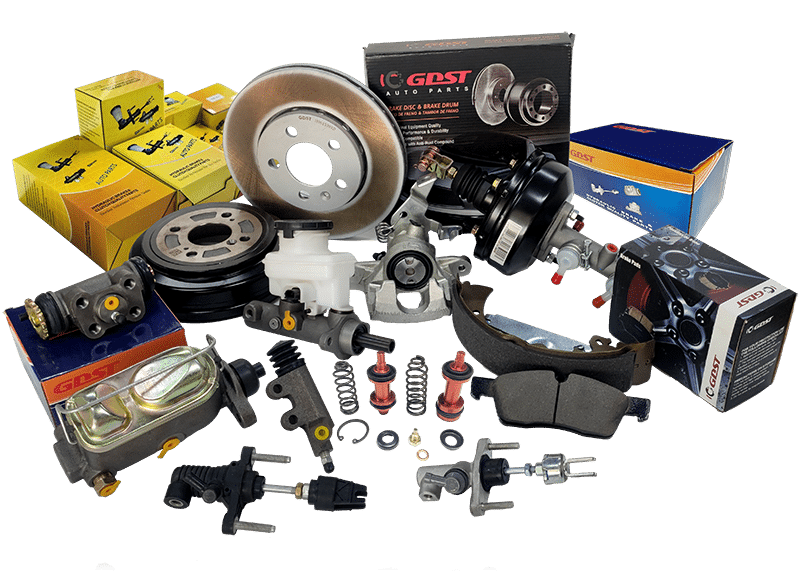For every car owner, auto parts distributor or wholesaler, understanding the cost of brake pads is very important. It could affect your maintenance budget or business expenses a lot. The price of brake pads varies a lot. What factors determine the cost? How to manage it effectively? Let’s explore it together.
The price of brake pad replacement is usually between $35 and $150 for parts of four wheels. An extra $80 to $120 per axle should be paid for labor costs. So the total cost is around $115 to $270 per axle.
So why do these costs vary, and what can you do to ensure you’re getting the best value for your vehicle or business?
Introduction to Brake Pads
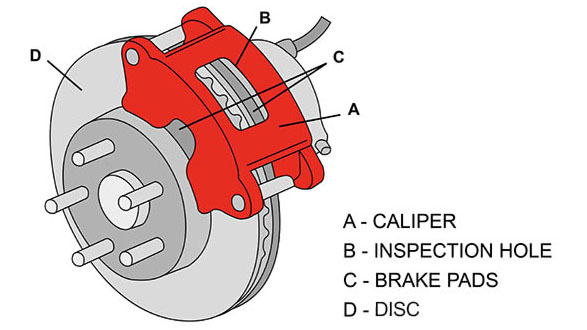
Brake pads are a very important component in the braking system of vehicles, such as cars, trucks, motorcycles, and some bicycles. They work by creating friction to slow down or stop the vehicle. When the brake pads press against the rotors (also called discs) that are attached to the wheels, friction is generated. The kinetic energy of the moving vehicle is converted into thermal energy by the force applied by the brake pads to the rotors. In this way, the vehicle’s speed is reduced or it can be stopped completely.
As time goes on, the brake pads will wear out due to the friction during braking. You should replace them in time to keep the safety and performance of your vehicle.
How Many Brake Pads In A Car?
- Vehicles with disc brakes on all four wheels will have 8 brake pads.
- Vehicles with drum brakes on all four wheels will have 8 brake shoes.
- Vehicles with a combination (disc brakes on the front, drum brakes on the rear) will have 4 brake pads (for the front wheels) and 4 brake shoes (for the rear wheels).
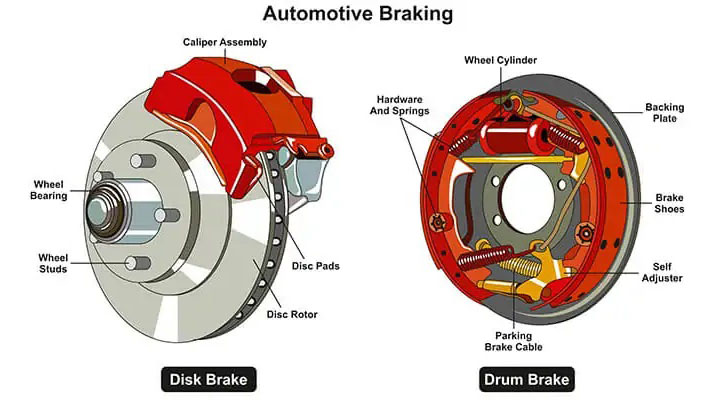
Cars can have two main types of brakes: Disc Brakes and Drum Brakes. Each type uses a different mechanism for slowing or stopping the vehicle, which in turn affects the number and type of components, including brake pads or shoes.
1.Disc Brakes
- Mechanism: Disc brakes work by calipers squeezing pairs of pads against a disc or rotor to generate friction, slowing down the vehicle.
- Brake Pads: In a disc brake system, there are usually two brake pads per disc (one on each side of the disc) at each wheel. So, for a vehicle with disc brakes on all four wheels, you’d have a total of eight brake pads.
- Usage: Disc brakes are widely used on the front wheels of most vehicles because of their better-stopping power and heat dissipation. Many modern cars have disc brakes on all four wheels.
2. Drum Brakes
- Mechanism: Drum brakes work by pushing brake shoes outward against a rotating drum-shaped component attached to the wheel. This friction slows the vehicle.
- Brake Shoes: Instead of brake pads, drum brakes use brake shoes. Each drum brake will typically have two brake shoes inside each drum.
- Usage: Drum brakes are more often found on the rear wheels of smaller cars and older vehicles. They are less expensive to produce and can be more durable but offer less stopping power and heat dissipation than disc brakes.
3.Mixed Systems (combination)
Many cars use a combination of both systems: disc brakes for the front wheels and drum brakes for the rear. This arrangement takes advantage of the superior stopping power of disc brakes for the front, where most of the braking force is needed due to forward weight transfer when stopping while utilizing the cost-effectiveness and sufficient performance of drum brakes for the rear.
Should I replace all 4 brake pads at once?
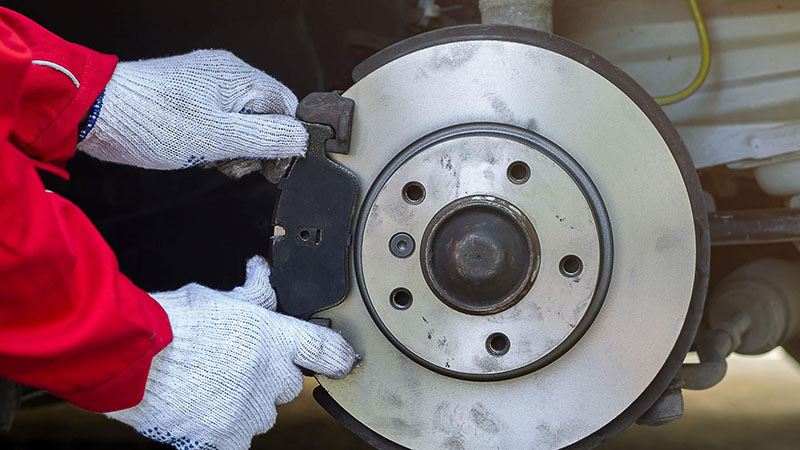
Yes, it’s generally recommended to replace all four brake pads at once for several reasons:
- Even Wear and Performance: Replacing all four brake pads at the same time helps ensure even wear and consistent performance on all wheels. This uniformity can improve the handling and safety of your vehicle, especially in braking situations.
- Cost-Effective in the Long Run: While replacing all four brake pads might seem more expensive upfront, it can save you time and money in the long run. This is because all pads will wear evenly, reducing the likelihood of premature wear on any one pad, which can lead to additional maintenance or repairs.
- Safety: Your vehicle’s braking system is crucial for safety. Having all brake pads at the same level of wear can ensure the braking system works optimally. Uneven wear can lead to reduced braking efficiency and potentially increase stopping distances.
- Maintenance Schedule: Replacing all four brake pads at once can simplify your vehicle’s maintenance schedule. It’s easier to keep track of when your brake pads were replaced and when they’re likely due for another replacement.
In some cases, if the wear on the front and rear pads is extremely different, a mechanic might suggest only replacing the set (front or rear) that’s worn down. Front brake pads often wear out faster than rear ones because they take most of the braking load. So, you’d better ask a mechanic to check your brake and give you some advice.
When Brake Pads Should Be Replaced?
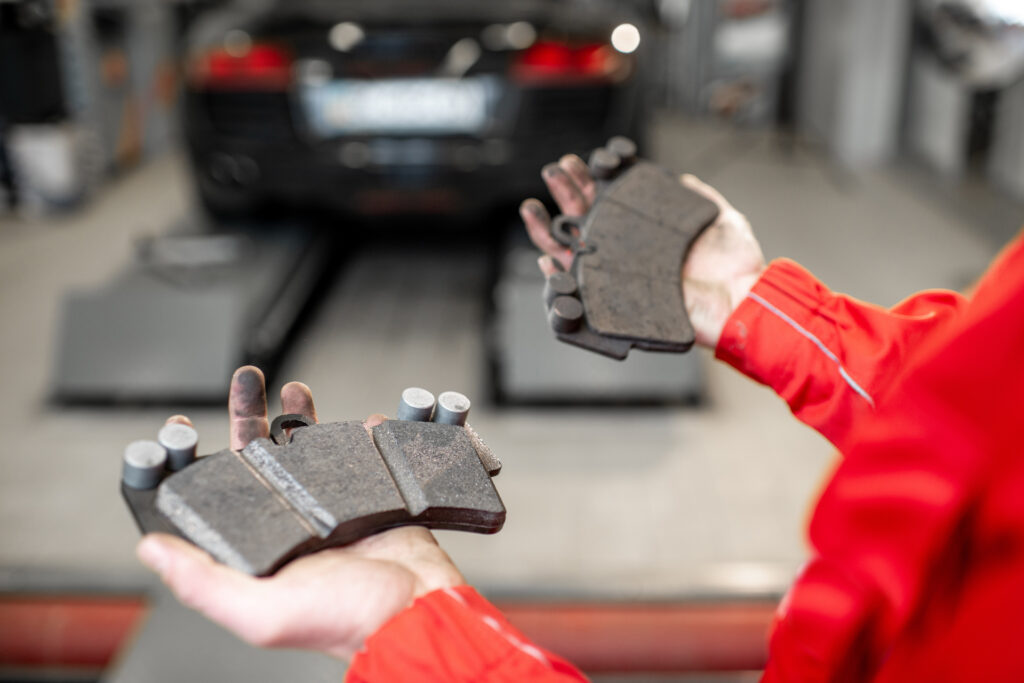
Brake pads are an important part of your vehicle’s braking system, and their condition is crucial for your safety. Here are the main signs that your brake pads might need to be replaced:
- Thickness: As a general rule, brake pads should be replaced when they wear down to less than 1/4 inch (about 3 mm) thick. However, some manufacturers suggest replacing them even if they have more material, so please refer to your vehicle’s manual.
- Wear Indicator Noise: Most brake pads have a metal wear indicator that makes a loud screeching or squealing noise when the pad has worn down to a critical level. This sound is a clear signal that you should inspect and replace the brake pads.
- Performance Decrease: If you notice a decrease in braking performance, such as longer stopping distances or less responsive braking, your brake pads may be worn out and need to be replaced.
- Vibration or Pulsation: If you feel vibration or pulsation through the brake pedal or steering wheel when braking, it may be caused by uneven wear of the brake pads or problems with the rotors. Please check and possibly replace the brake pads.
- Visual Inspection: If possible, check the thickness of the brake pads through the wheels. If the pad material looks very thin, it’s time to replace them.
- Dashboard Indicator Light: Some vehicles are equipped with a brake pad monitoring system that will illuminate a warning light on the dashboard when you need to check or replace the brake pads.
- Unusual Sounds or Smells: Any grinding sounds during braking, or a burning smell while driving, indicate that your brake pads are worn out and may damage the rotors.
Where Can I Get Brake Pads Put On?

You can choose different ways to get brake pads installed based on your location and preference. Here is a general guide to show you where you can have brake pads put on.
- Authorized Dealerships: If your vehicle is still under warranty, or if you prefer having your vehicle serviced by manufacturer-trained technicians, visiting an authorized dealership for your car brand might be the best option. Dealerships use original equipment manufacturer (OEM) parts and are familiar with the specific needs of your vehicle model.
- Auto Repair Shops: Independent auto repair shops are a good choice for brake pad replacement. They can offer a more personalized service at a lower price compared to dealerships. Most repair shops have certified mechanics and can provide quality aftermarket or OEM parts depending on your requirement.
- Specialty Brake Shops: Some shops specialize in brake service, which could be a good choice for brake pad installation. They usually provide quick service and have more knowledge about brake systems than general mechanics.
- Chain Repair Stores: Nationwide chain stores like Midas, Jiffy Lube, or Pep Boys offer brake services, including brake pad replacements. These stores often have standardized pricing and service offerings, making it easier to know what to expect in terms of cost and quality.
But for brake pad distributors and wholesalers, how you can find brake pad suppliers? Here are some tips to look for suppliers:
- Trade Shows and Conferences: Attending automotive trade shows and conferences is one of the best ways to meet manufacturers and larger distributors. These events provide networking opportunities, a chance to see the latest products firsthand, and the possibility to form direct relationships with suppliers.
- Online B2B Marketplaces: Websites like Alibaba, Global Sources, and ThomasNet cater to businesses looking to source products in bulk, including automotive parts like brake pads. These platforms allow you to connect with manufacturers from all over the world, compare products, and negotiate terms directly.
- Contact Manufacturers Directly: Identify brake pad manufacturers and reach out to them directly via their official websites or the contact information provided in industry directories. Many manufacturers are eager to expand their distribution networks and may offer favorable terms to new distributors.
- Sourcing Agent: If you want to find suppliers from some areas with language barriers or complex market conditions, like China, it is better to cooperate with a sourcing agent. They know the local market well and can help you to find the right suppliers more easily.

